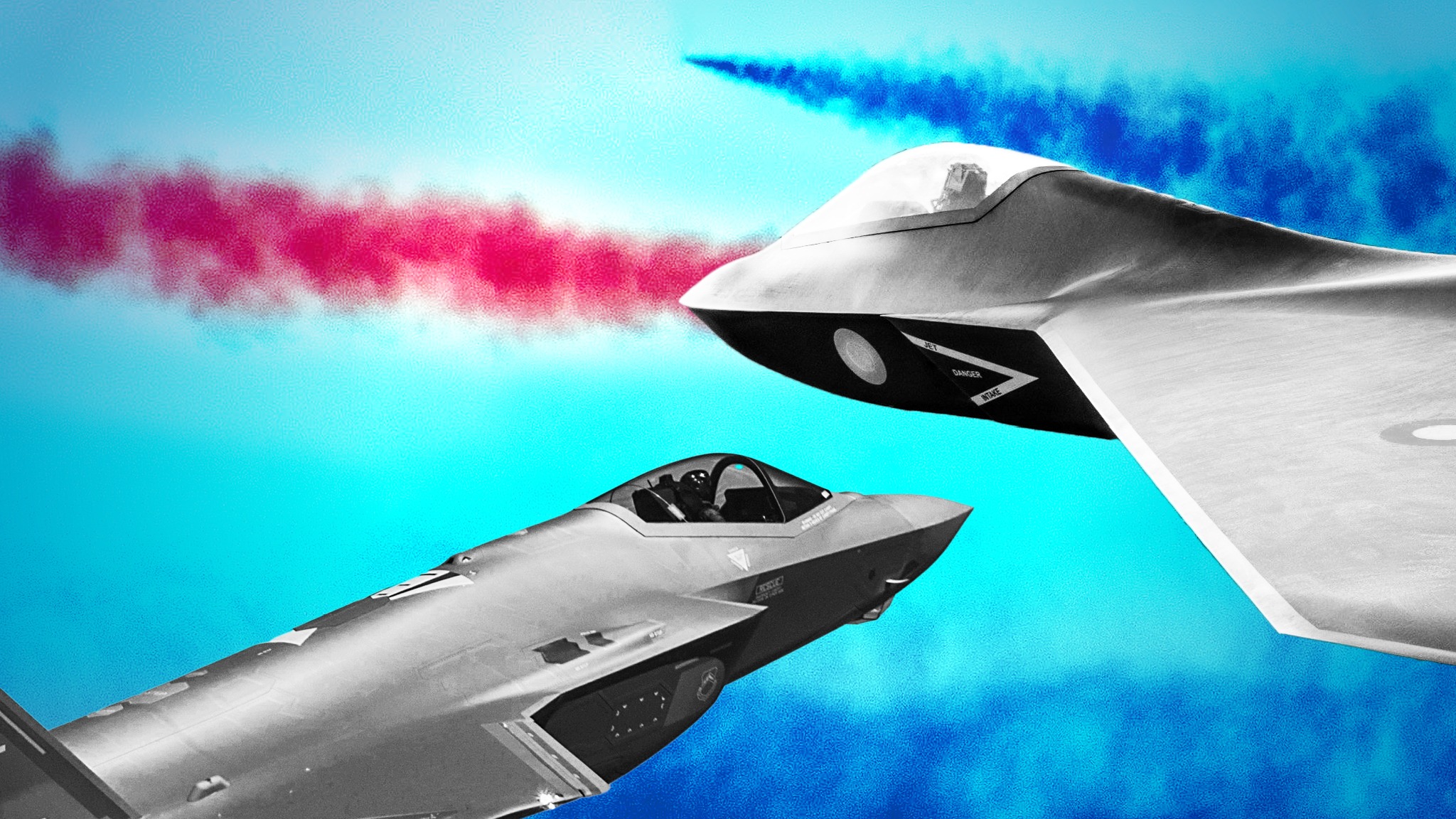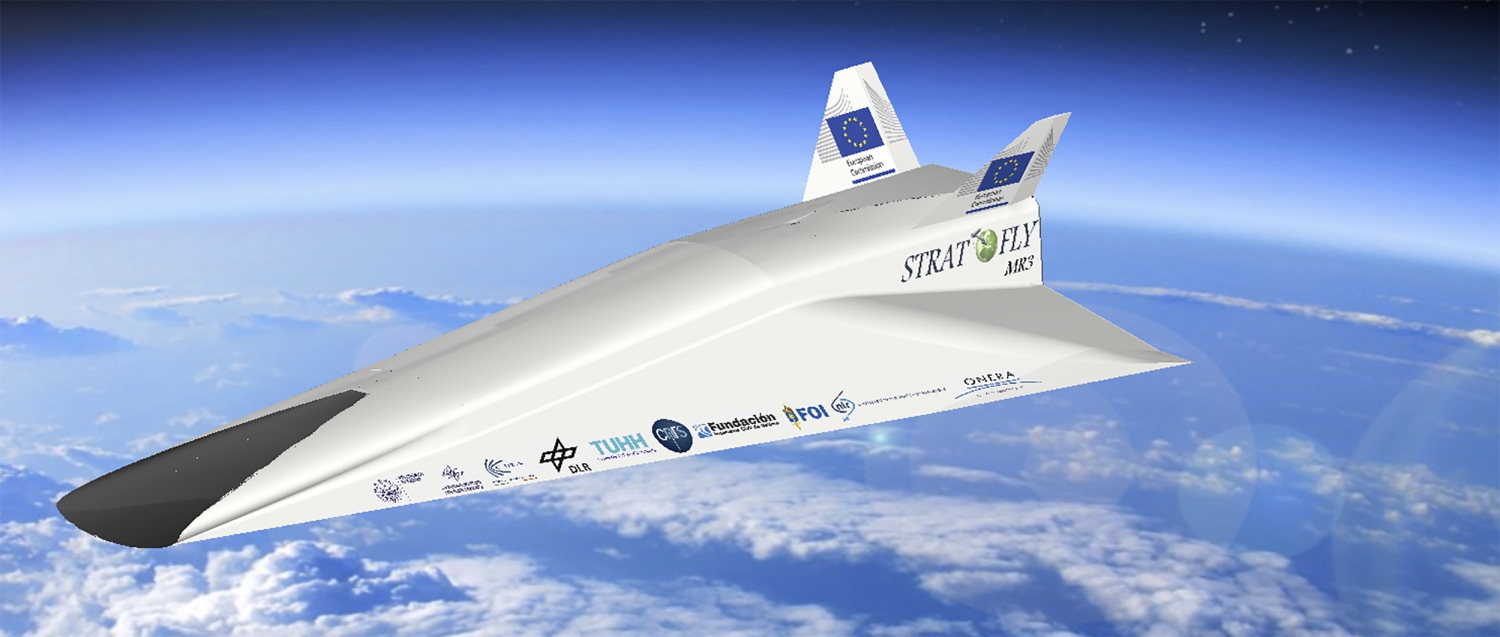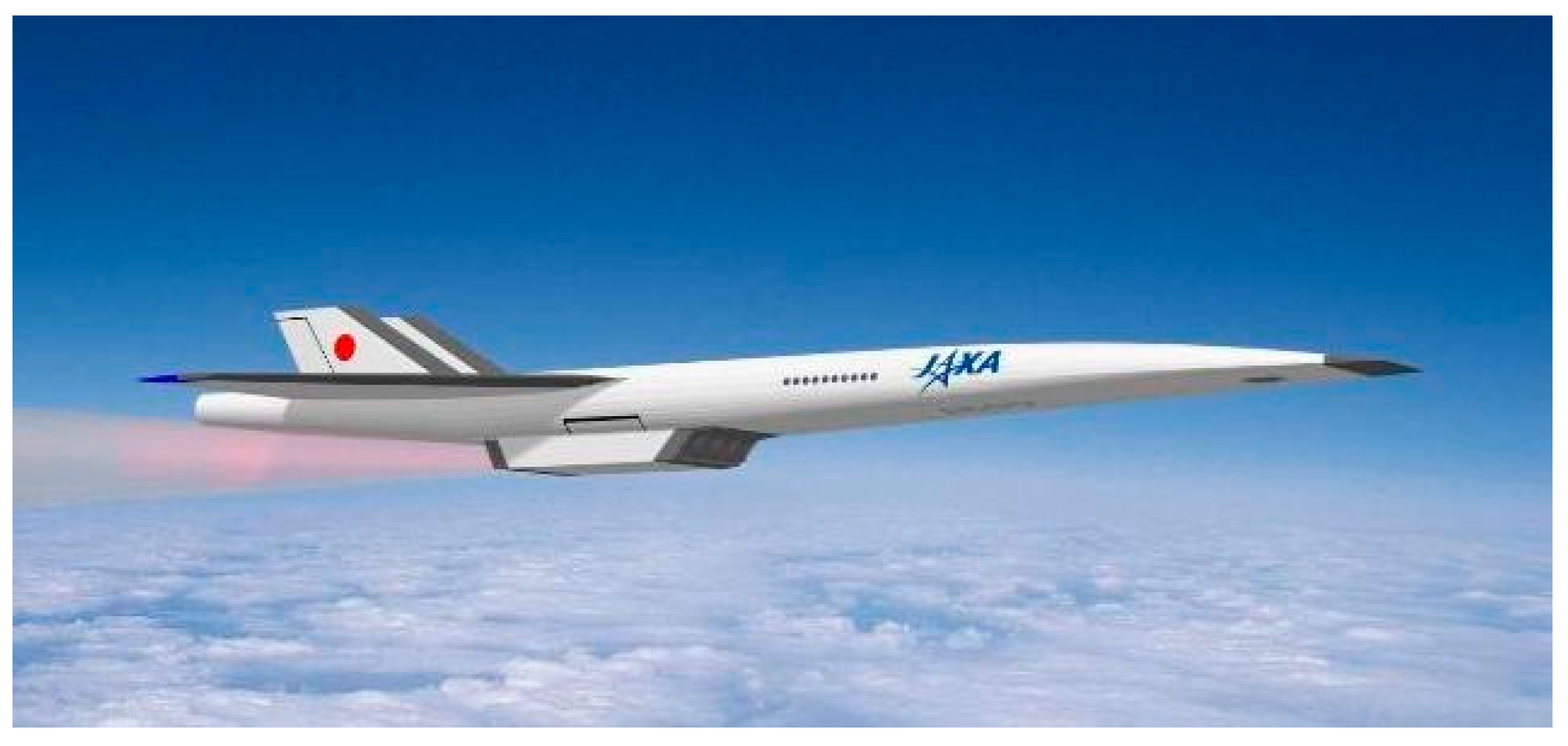Mach 5 Aircraft - Meanwhile, the companies Virgin Galactic and Boom are working together on a supersonic jet designed to fly at twice the speed of sound, or Mach 2. The company Spike Aerospace is working on its own supersonic plane, called the S-512 Quiet Supersonic Jet,
to shush sonic booms. Almost two decades since Concorde retired, interest around supersonic travel has been picking up pace, and several super-fast planes are under development. Airlines seem interested: United has already committed itself to offering supersonic routes as early as 2029.
Mach 5 Aircraft

"We're excited about the potential of hypersonic technology to connect the world faster than ever before," Kevin Bowcutt, Boeing's senior technical fellow and chief scientist of hypersonics, said in a statement. "Boeing is building upon a foundation of six decades of work designing, developing and flying experimental hypersonic vehicles, which makes us the right company to lead the effort in bringing this technology to market in the future."
How Was The Missile Tested?
There's a whole host of problems that Hermeus isn't even working on at the moment, such as what type of sustainable fuel to use – since consumption will be much higher than current jets – and the extreme temperatures that the fuselage of a hypersonic plane must
be able to stand with. The SR-71 Blackbird, on the other hand, had to be made of titanium, a rare metal that can withstand extreme heat, and the cockpit glass had to be made of quartz, with its exterior temperature reaching 600 F during a mission.
NASA is building the newly named X-59 QueSST experimental aircraft to test technology needed for quiet supersonic travel. The project aims to minimize the disruptive sonic booms that have prevented commercial supersonic flights over land in the past.
Because that flight only lasted a few seconds, the record for the longest sustained flight above Mach 5 belongs to the Boeing X-51, another unmanned experimental aircraft, which in 2013 flew for over three minutes at Mach 5.1 (about 3,400 mph).

Both aircraft had to be launched from altitude by a B-52 bomber, and then brought up to speed by a rocket, highlighting the intricacies of these type of high-speed flights. "The HAWC vehicle operates best in oxygen-rich atmosphere, where speed and maneuverability make it difficult to detect in a timely way," DARPA said in a statement.
"It could strike targets much more quickly than subsonic missiles and has significant kinetic energy even without high explosives." Hermeus will use its hybrid engine in turbojet mode when taking off and landing, as well as at subsonic speeds.
Then, the engine will gradually reconfigure itself into a ramjet mode as it reaches Mach 3 and until Mach 5. The hypersonic aircraft could have "military or commercial applications" and is just one of several such vehicles Boeing engineers are studying to develop superfast transportation technology, the company said in a statement.
In an artist's concept, the plane looks sleek and futuristic, with extremely swept-back wings, twin tails and sharp, pointed nose. “It'll be pretty similar to Concorde,” says Piplica. “You'll be accelerating for a longer period of time than you do on today's aircraft, where you feel pushed back in your seat for about 30 seconds to a minute or so.
It will be a hybrid of two traditional technologies: a turbojet, which is similar to what airliners use, and a ramjet, a type of engine that only works at supersonic speeds and above. Initially, the engine will power Quarterhorse, the sleek hypersonic drone that Hermeus is developing through a $60 million partnership with the US Air Force.
“We expect it to be profitable at today's business class prices,” says Piplica, with the caveat that it's hard to gauge how much people will be prepared to pay to fly five times faster, because “you can't really answer that question until

there's a product out there and you have the real data.” It's unsurprising, then, that the initial focus of the company is on the engine. Tests started in February 2020 for a new type of engine design, based on an existing model used in fighter aircraft and manufactured by General Electric.
“That experience will last for maybe 10 to 12 minutes. But once you're up at Mach 5, at 100,000 feet or so, it'll be a really smooth ride. There's not a lot of air traffic up there, and the atmosphere is relatively benign.”
The speed of Concorde, which traveled at less than half the projected speed of Hermeus, was limited precisely by temperature, with windows and other internal surfaces becoming warm to the touch by the end of a flight.
Hermeus emerged last year, announcing plans to develop a Mach 5 aircraft that could fly from New York to Paris in about 90 minutes. Ars Technica reported in May 2019 that the company raised an initial round of funding, led by Khosla Ventures, which it used to develop the prototype.
Hermeus said it would use a turbine-based combined-cycle engine for the propulsion system, according to the report. But what about hypersonic travel, which happens at speeds of Mach 5 – five times the speed of sound – and above?
That would get an aircraft from New York to London in just 90 minutes, compared to about three hours for Concorde, and between six to seven hours for a regular passenger jet. That passenger plane is a long way away – Hermeus hopes to get it in the air for the first test flight before the decade is out, in 2029 – but because its technology has to be built almost entirely from the ground up, the company is already

plan it out. “There's really nothing like Hermeus, although many similar projects have come and gone in the past,” says Richard Aboulafia, an aviation analyst at Teal Group. “It never seems to work out. If they can magically create a hypersonic transport in the late 2030s, and the ticket price is in the business class range, then yes, that will be successful.
But the odds of this happening are somewhere in the 1% range.” Interestingly, when designing a jet engine to go faster, parts are removed rather than added. In a turbojet, the air enters from the front and is first compressed (to increase its energy potential) by rotating blades, then mixed with fuel and ignited.
The resulting hot gas is blasted out through the back of the engine, pushing the plane forward. Hermeus, an Atlanta-based startup whose goal is to develop hypersonic aircraft, believes so. It's already testing a new type of engine it says will eventually be capable of reaching Mach 5 (over 3,000 mph).
The engine is designed for a small, unmanned hypersonic aircraft Hermeus is currently creating for the US Air Force, but scaled to a bigger size, it will be able to power a passenger plane. Hypersonic aircraft are capable of traveling at speeds of Mach 5 and beyond.
Mach 5 is about five times the speed of sound, or 3,806 mph (6,125 km/h) at sea level. NASA's space shuttles, for comparison, traveled at Mach 25 when re-entering the Earth's atmosphere. The U.S. military has tested hypersonic weapons that hit Mach 20 in the past.
[Super Sonic! The 11 Fastest Military Airplanes] The United States tested an advanced hypersonic missile system last week that will "offer next generation capability" to the US military, the Pentagon's Defense Advanced Research Projects Agency (DARPA) said on Monday.

The test flight comes just a few months after Russia tested a similar missile. For an air-breathing aircraft – that is, powered by jet engines rather than a rocket – capable of taking off and landing by itself, the speed record is “just” Mach 3.3 (about 2,200 mph), set by the SR-71 Blackbird
, a military spy plane, in 1976. “I think people asked the same questions about the new space industry in the early days of SpaceX,” he says. “Folks looked at getting into orbit and said, this should be taking a billion dollars, but SpaceX did it for $90 million, with Falcon 1.”
During the test, which was carried out in partnership with DARPA and the US Air Force last week, the missile was released from under the wing of an aircraft, and seconds later a rocket booster kicked in propelling it faster than the speed of sound, or
Mach 1. Hermeus said it won the contract after designing, building, and successfully testing a prototype of an engine capable of propelling an airplane to Mach 5, or five times the speed of sound — about 3,300 mph.
Mach 5 represents the delineation between supersonic and hypersonic speeds. Hermeus is planning to fund itself by developing various aircraft on the way to its passenger plane, similarly to SpaceX's development of its Falcon 1, Dragon, Falcon Heavy and Starship rockets, which ultimately serve a vision of interplanetary spaceflight while also generating revenue by working with
NASA and commercial partners. Hermeus plans to build a demonstrator vehicle over the next five years, with commercial aircraft envisioned in about a decade, Skyler Shuford, its cofounder and chief operating officer, said in 2019. A press release announcing the Air Force contract said part of the project would

focus on integrating Air Force requirements into the airplane's designs. “To help us size the aircraft, we basically built a business model for an airline,” says AJ Piplica, CEO of Hermeus. “We focused on the business class and first class travelers, and then played around with some parameters such as speed and operating costs.
What came out of that was an aircraft with a 20-passenger cabin,” he adds. “The turbojet portion and the ramjet portion by themselves are mature technologies that we've been using for 50 years. The trick is to put them together, so we designed our own architecture around an off-the-shelf turbojet engine and then built out from there,” says Piplica.
Above Mach 3, however, there's no need to compress the air: It will compress itself upon entering the engine, simply by having to slow down so much. Therefore, for speeds above Mach 3 and up until Mach 6, an engine type called ramjet is often used – so called because it literally rams into the air.
It has no moving parts, unlike turbojets, but it doesn't work at all at speeds below Mach 3. For aircraft with humans on board, the current absolute speed record is Mach 6.7 (4,520 mph), set in 1967 by the X-15.
It was basically a rocket with a seat, designed to achieve the record, and also had to be launched from altitude by a B-52. The proposed Hermeus passenger aircraft, therefore, would beat the current record for the fastest air-breathing plane by a large margin, and by flying for an extended time at Mach 5, it would outclass an achievement currently in the realm of unmanned experimental vehicles (
of course, other aircraft might beat these records in the future before Hermeus does).
new jet engine mach 5, mach 5 jet, mach 5 plane, is mach 5 possible, mach 5 fighter jet, hermeus mach 5, mach 5 engine, hermeus mach 5 aircraft
0 Comments